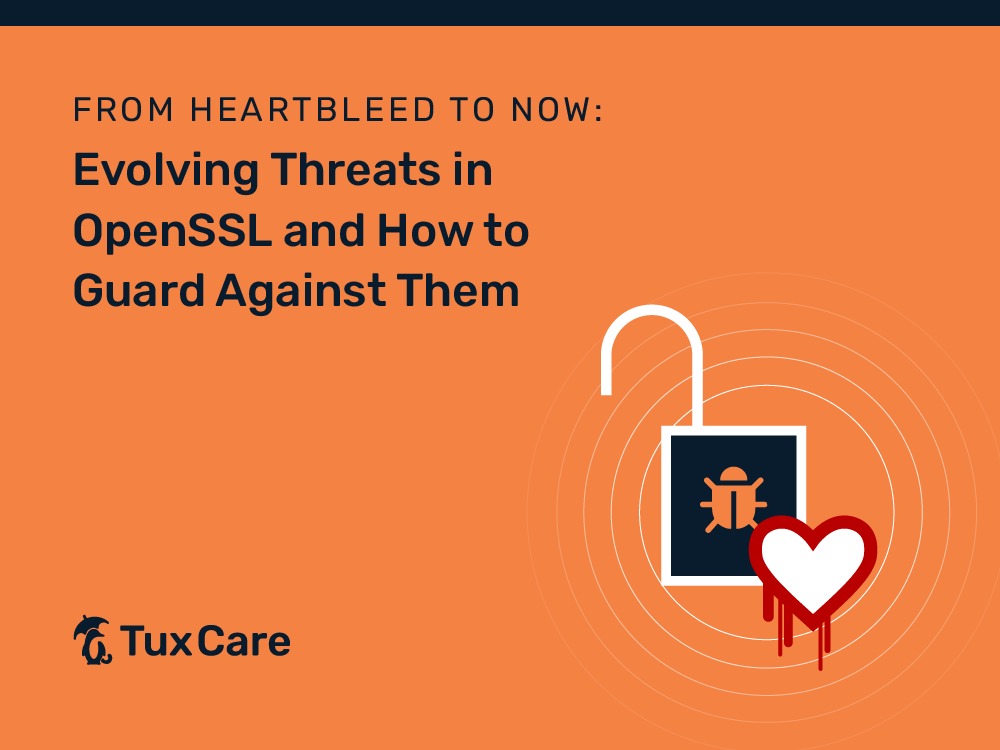From Heartbleed to Now: Evolving Threats in OpenSSL and How to Guard Against Them
In 2014, the cybersecurity community witnessed a critical OpenSSL vulnerability, “Heartbleed,” which changed how the world perceived digital security. It is considered to be among the most serious flaws in internet history. Heartbleed not only exposed the weaknesses in popular cryptographic protocols but also the potential repercussions of a small coding error.
Following the Heartbleed event, the cybersecurity landscape experienced a dramatic change as the emphasis shifted to fortifying security protocols and resolving the root causes of vulnerabilities. Several upgrades, improved code standards, stringent security audits, and a dedication to addressing identified vulnerabilities were the outcomes of this momentum.
However, as with any constantly evolving technology, vulnerabilities continued to emerge in OpenSSL despite these efforts. The post-Heartbleed vulnerabilities remind us that security is an ongoing process, and we must remain vigilant, ensuring that security practices align with the latest security recommendations.
In this article, we will explore how threats in OpenSSL have evolved since Heartbleed and offer strategies for staying secure in light of these changing threats.
Post-Heartbleed Threats in OpenSSL
Following the Heartbleed incident, the OpenSSL project garnered a great deal of attention and support, which resulted in the fixing of other significant vulnerabilities in later releases.
POODLE
In October 2014, the POODLE (Padding Oracle on Downgraded Legacy Encryption) attack targeted SSL/TLS protocol weaknesses and resulted in data decryption. It can impact any server that supports SSL 3.0 and earlier TLS versions. This highlighted the need to disable older, insecure encryption methods.
Logjam
Logjam exploited a weakness in the Diffie-Hellman key exchange, allowing attackers to downgrade the Transport Layer Security (TLS) connection and intercept traffic. By compromising the 512-bit Diffie-Hellman protocol group, attackers were able to gain access to the connection and insert harmful data into it.
Upon finding the vulnerability, OpenSSL quickly released an update that raised the minimum Diffie-Hellman key size to 768 bits and then later to 1024 bits.
SWEET32
SWEET32 exposed a weakness in the popular block cipher algorithms, like 3DES and Blowfish. This vulnerability exploited the extensive data transfer of TLS connections, highlighting the significance of routinely reviewing security protocols.
DROWN
Discovered in 2016, the DROWN (Decrypting RSA with Obsolete and Weakened eNcryption) attack took advantage of flaws in the SSLv2 protocol, which was deprecated but was still maintained in certain settings. It became necessary to disable SSLv2 in order to mitigate DROWN.
Strategies for Staying Secure
Regular Updates and Patch Management
As new threats in OpenSSL arise, developers release patches to fix vulnerabilities. Therefore, it is crucial to keep OpenSSL and other software up to date. Establish a comprehensive patch management strategy to ensure timely patches.
Implement an automated patching solution like LibCare that automatically applies security updates for OpenSSL. LibCare provides a live patching service, which means you don’t need to reboot a server or schedule maintenance windows.
LibCare is available as an add-on tool for KernelCare Enterprise, a Linux kernel live patching tool. With KernelCare and LibCare together, you can ensure the maximum security and compliance of your Linux servers.
Configuration Best Practices
Follow recommended configuration best practices for OpenSSL. Disable weak encryption algorithms, outdated protocols, and unnecessary features. Implement strong cipher suites and secure key exchange protocols.
Strong Encryption
Use robust encryption techniques and key sizes. Make sure that tools and libraries for cryptography are set up to use modern encryption standards such as TLS 1.2 or 1.3.
Regular Security Audits
Perform regular security audits to detect and fix vulnerabilities. Use network scans, code inspections, and penetration testing to identify and eliminate possible threats.
Stay Informed
Keep up with the latest security updates and threats in OpenSSL. To get alerts in a timely manner, join security forums and mailing lists.
Use Web Application Firewalls (WAFs)
To defend against attacks such as DROWN and flaws in the SSL/TLS protocol, deploy Web Application Firewalls. These can provide your online apps with an extra layer of protection.
Implement Security Certificates
To secure your communications, it is recommended to use strong private keys and SSL/TLS certificates. Rotate and renew keys and certificates on a regular basis.
Final Thoughts
The Heartbleed vulnerability was a wake-up call for the cybersecurity community, leading to significant improvements in OpenSSL security and awareness of the need for secure digital infrastructures. As vulnerabilities continue to evolve, staying secure requires ongoing vigilance, regular updates, best practices, and a proactive approach to security. Following the above strategies, individuals and organizations can protect themselves from the evolving threats in OpenSSL.
Heartbleed and other OpenSSL vulnerabilities might still be a concern for many companies that are using outdated, unpatched versions of OpenSSL. This emphasizes how crucial it is to update software and get rid of outdated versions.
Use LibCare now to keep the OpenSSL library up to date and secure with automated rebootless patching. Speak to a TuxCare Linux security expert to learn more about shared libraries patching with LibCare.
Discover how to perform secure and effective OpenSSL patching.



 Documentation
Documentation Login
Login




